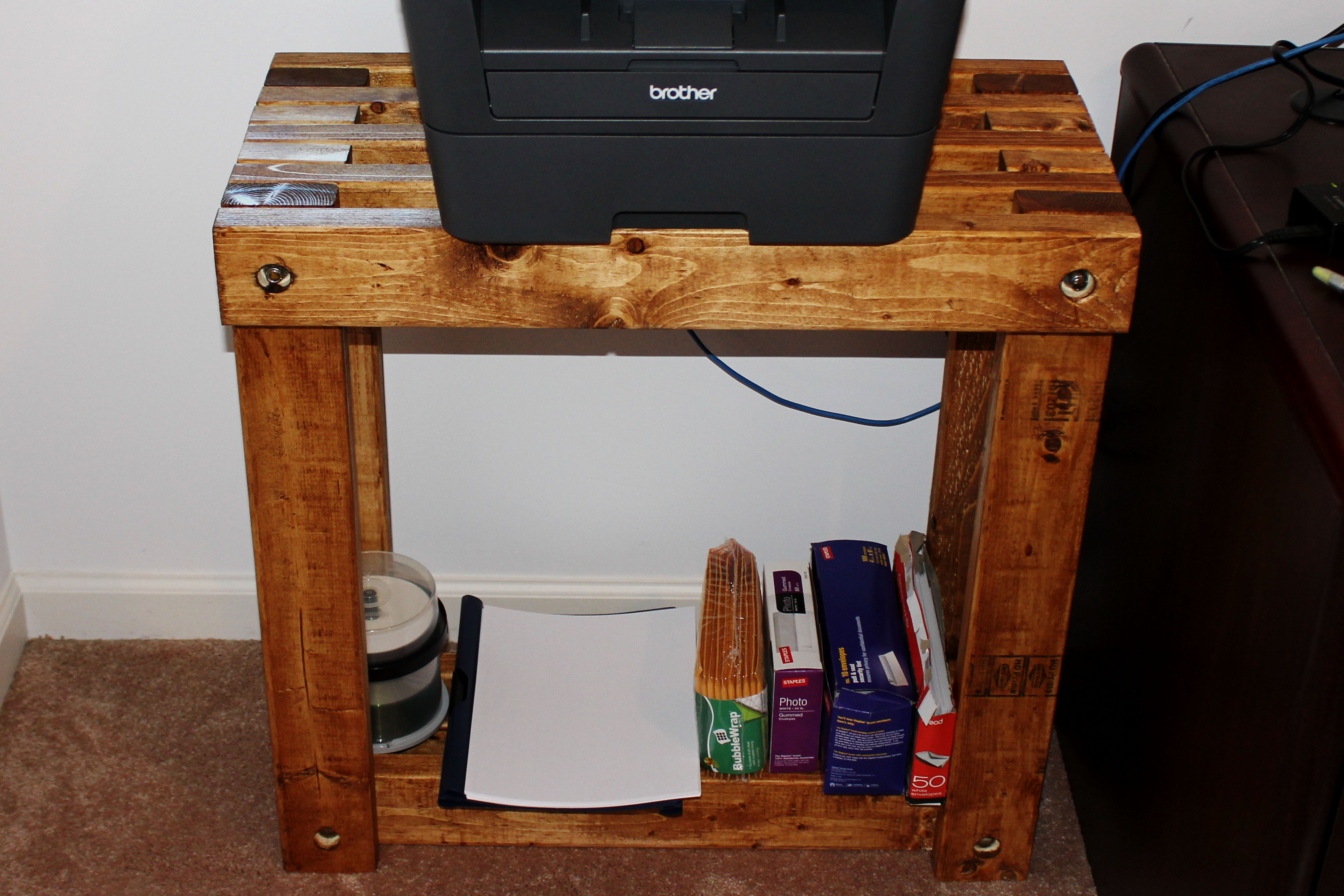
Tables, workbenches, or even printer stands are those unsung heroes of our lives that basically just sit there, but are nonetheless essential. After all, who really wants to work and eat off of the ground all the time?

In my case, I had nearly all of the tables and desks that I needed in life, except for a place to put my printer. After a move, my previous stand had never really been set up correctly, and with a new and heavier printer, it seemed like a good idea to invest in something sturdy. I didn’t have to construct it out of 2×4s, but I’d been mulling over this sort of design for a while and thought it would look good, if overbuilt.
The Design
After some debate about height and width, I decided that it would be simplest to make each long 2×4 structural element 28″ long for a square table. This simplified construction, as only these and 3½” long spacer sections were needed. The proportions ended up working out nicely, as I’d measured my original stand to see what would work best.




















